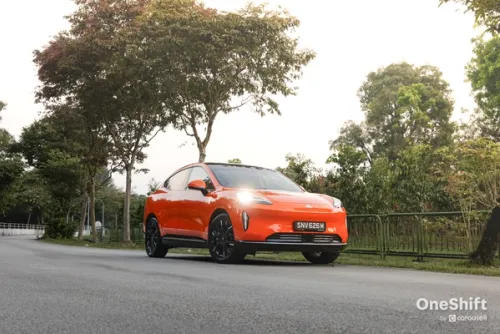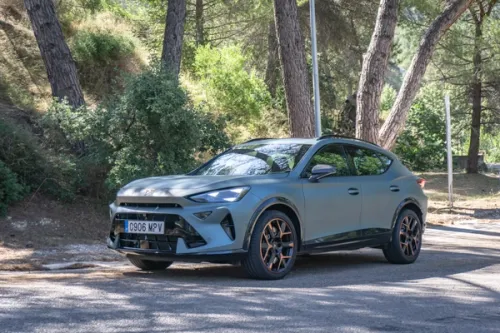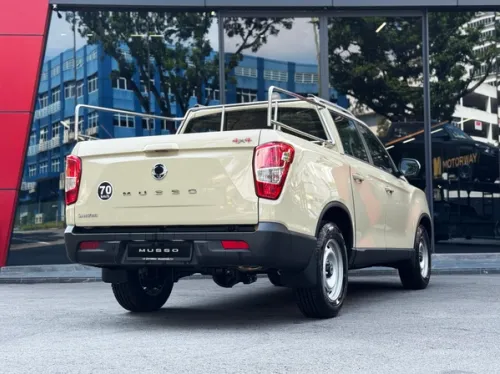Jaguar XJ L 5.0 V8 Premium Luxury Review: Cat on the prowl
Jaguar's big saloon gets a total makeover for battle royale in the luxury limo class. Raymond Lai finds out if it has the substance to really complete with the likes of the S-Class and 7 Series.


While the previous XJ came with a 3-litre V6 petrol model, the new generation car is offered with only a turbodiesel V6 as an entry-level alternative to the 5-litre V8 variants.
The diesel model proved to be an interesting alternative when I spent some time with it recently. The 2993cc TDV6 lump is basically the same unit found in the XFS we drove recently as well as in the Land Rover Discovery 4 and hence offers 275bhp and a whopping 600Nm of torque. The latter is produced at just 2000rpm and is 85Nm more than the 5000cc petrol V8 can muster. Due to the oil burner's narrower rev band though (it revs to about 4800rpm only), the diesel model takes 6.4 seconds to complete the century sprint, which is seven-tenths slower than the V8's time. The acceleration figures are not something that the diesel ought to be ashamed of though as this time is still quicker than most of the XJ's competitors with V6 petrol lumps.
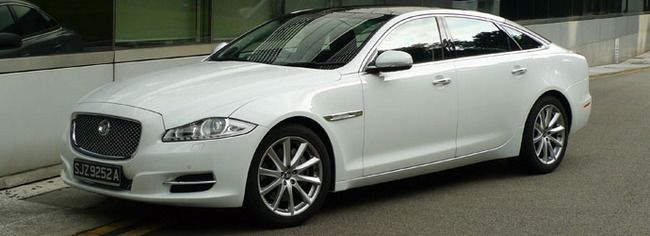
It is in Singapore's stop-start and relatively slow sped traffic that the diesel is most impressive though thanks to the instant get-up-and-go and incredibly flexible and tractable nature of oil burners. With the diesel motor, the big XJ will effortlessly fill up gaps in expressway traffic and sprint from one set of traffic lights to the next quickly without breaking into a sweat. Refinement is also a strong suit of this diesel motor - it stays quiet and refined at both idling and while on the move, with only a small trade-off in overall smoothness when compared to the petrol V8. Obviously, it doesn't have the sweet rumble if the latter but the oil burning V6 doesn't sound at all bad.
On the outside, there are hardly any hints that the white car here is the diesel model when compared to the petrol V8 variant and the diesel sounds quiet enough even on the outside to make most people think that it is a petrol powered car. Inside, all the kit and luxuries in the petrol model is present in the Premium Luxury diesel model here as well.
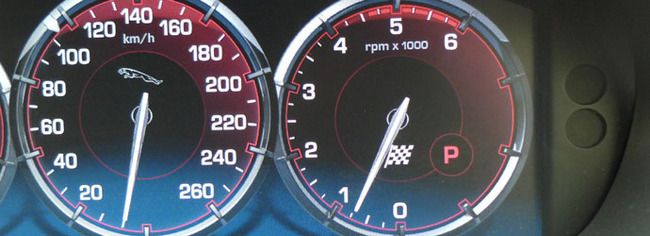
So the ultimate question now is, can the diesel XJ make a financial case for itself especially when considering the additional annual road tax its owner will have to pay over the petrol model. In similar Premium Luxury spec and long wheelbase variant, the 3-litre turbodiesel has a $20k lower buying price than the petrol model. When it comes to taxing the cars - the 3-litre will set one back $6120 per year including the diesel passenger tax (which is an additional 1.25 times of the standard road tax on top of the usual engine capacity based road tax) while the 5-litre V8 costs $5514 a year to tax. This makes the smaller sized diesel engine almost $600 more expensive to tax each year.
Jaguar quotes average fuel consumption figures of 7.2 litres per 100km and 11.4 litres per 100km for the diesel and petrol respectively which makes the former 4.2 litres per 100km more efficient and less thirsty than the petrol. So for an owner that drives his XJ roughly 20,000km a year, he would have saved 840 litres of fuel per year, which is plenty to say the least. In terms of dollars, he would have saved roughly $1680 if we take it that a litre of prtrol costs roughly $2 a litre. But in reality, the savings are even more as a litre of diesel is about 50 cents cheaper than petrol so the potential savings in fueling the 3-litre diesel over the petrol model over a period of a year can be as much as $2000, a number which is more than enough to cover that senseless diesel tax. Obviously, things will swing even more towards the diesel model's cause if Singapore's ancient road tax system gets overhauled to move towards a CO2 based one rather than one on engine size. The argument for the diesel model is rightfully valid in the XJ's case here. Enough said.
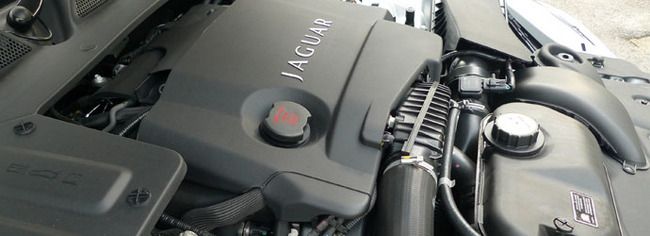
Credits: Story and Photos by Raymond Lai








Get the Best Price for your used car
from 500+ dealers in 24 hours

- Convenient and Hassle-Free
- Consumer Protection
Transparent Process
With No Obligation

